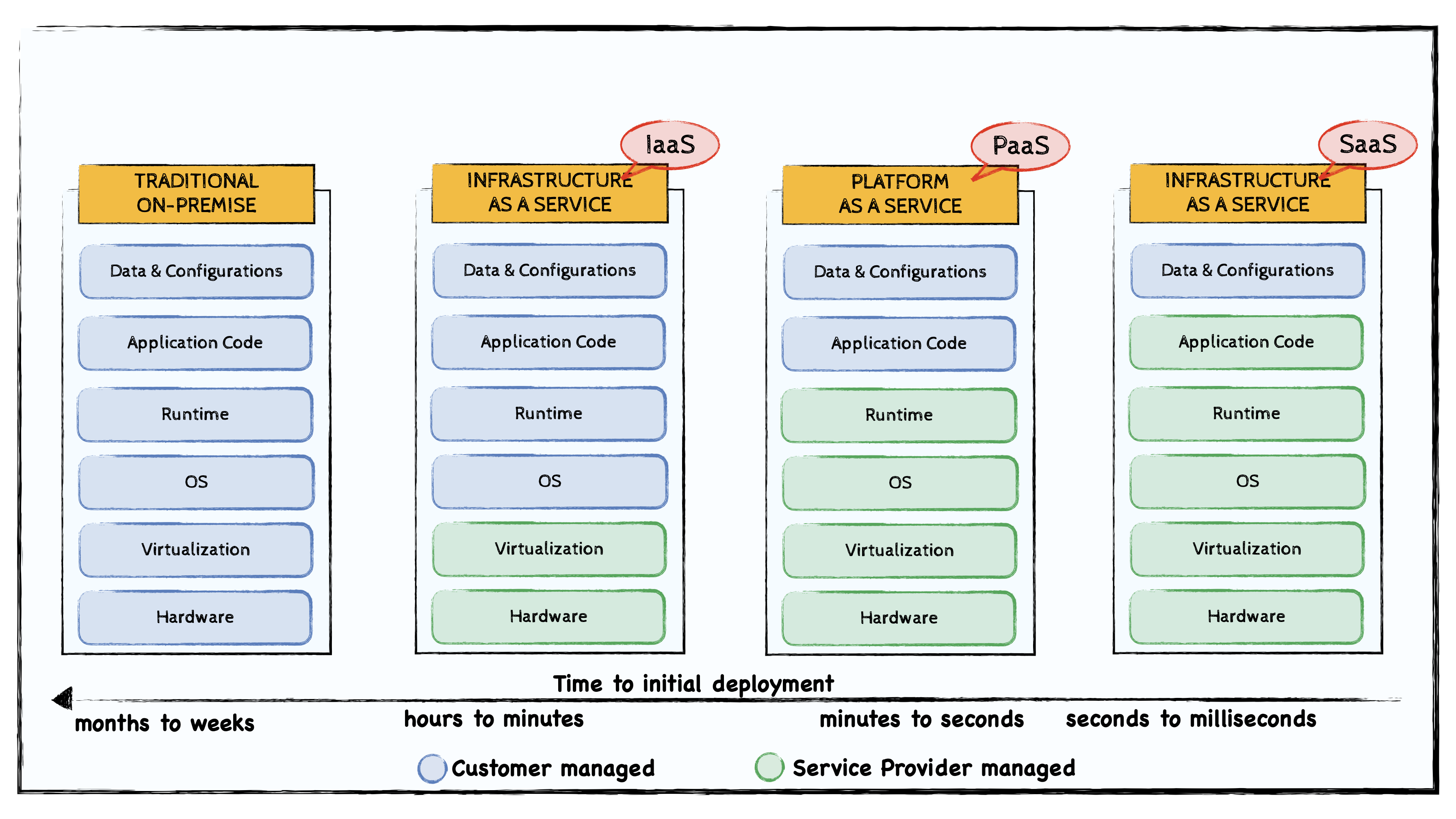A cloud service model is a way of delivering cloud computing services to users. There are three main types of cloud service models:
- Infrastructure as a Service (IaaS): This model provides virtualized computing resources such as servers, storage, and networking. Customers can use these resources to run their own applications and manage their own operating systems, middleware, and applications.
- Platform as a Service (PaaS): This model provides a platform for customers to develop, run, and manage their own applications without having to worry about the underlying infrastructure. The provider manages the infrastructure and customers only need to focus on their applications.
- Software as a Service (SaaS): This model provides access to software applications that are hosted in the cloud. Customers can access these applications through a web browser or a mobile app, without having to install and maintain the software themselves.
 A general view of the cloud service models
A general view of the cloud service models
Knowing about these service models is important when migrating to the cloud because it can help you understand the different levels of responsibility between the cloud provider and the customer. For example, in an IaaS model, the customer is responsible for managing the operating system, middleware, and applications, while the provider is responsible for the underlying infrastructure. Understanding these responsibilities can help you choose the right service model for your business needs and make sure you have the necessary skills and resources to manage your cloud environment effectively.
Unfortunately, the cloud service models differ from cloud provider to cloud provider. In the following list you can find links to the description of the cloud service models of the big cloud providers: